A tourist information brochure produced by the Paleochora ‘dimos’ (town council) some years ago recommended four ‘canyons’ of interest to visiting walkers – the gorges of Anidri, Agia Irini and Samaria, and the Kalogiros Gorge. Whereas the first three are familiar and well-trodden, the Kalogiros Gorge is relatively unknown.
“This is considered as the ‘inviolate’ gorge because there are no signs of human interference,” described the leaflet. “With exceedingly rich and rare greenery, the gorge is about 5 km long, turning and winding, the trek is rather difficult, but worth the effort.”
So where is the “inviolate” and little-frequented Kalogiros Gorge? The start of a very pleasant walk through the valley to Sassalos (approx. 9 km, 3 hours) is 1.5 km west of Aligi, at the junction where the high road over to Voutas leaves that to Strovles (and Elos). The distance from Paleochora is 23 km, around half an hour by car, with ample parking, or ideally, as this is a linear walk, friends will drop you here and then drive through Aligi and Milones to Sassalos and meet you there. (If not, I’ll explain later how to get back!)
The first part of the route, around an hour to the chapel of Agios Georgios, is easy walking along clear tracks. Set off back towards Paleochora, but almost immediately turn left up a concrete track. (This is the steepest part of the whole walk, so you have an excuse to stop, rest, and enjoy the views!) When the concrete ends, continue through olive groves to reach a cross-tracks by a large boulder. Turning left will take you to Strovles, as described in our book (see below), but continue right, uphill – there may be a sign indicating ‘Ag. Georgios’.
Always keep to the main track , which rises gradually, curving round to the north, passing through a stock gate, then begins to descend into a wide valley. At a junction by tall plane trees, fork left. Soon the track crosses a small stream to reach tiny Agios Georgios church, delightfully situated in a lush meadow.
Now it’s necessary to concentrate on route-finding. To the right (east side) of the church, a path heads north through an avenue of tall, well above head-height ‘wild strawberry’ trees (arbutus unedo) . Ripening in late autumn, the orange & red fruits are edible but seedy, and used for making jam, liqueur, and a type of ‘raki’.
Follow the path carefully as it narrows below the overhanging trees, and emerges at a rocky clearing, high enough to look across, and back up the valley. Pick up the path again at the far side, and descend gradually to the first of five crossings of the stream, all way-marked with (fading) red paint. Dry in summer (but not this year, after a very wet winter), use stepping stones to cross in spring or autumn.
Clearly little-used in recent years, the path is at times indistinct, especially among the plane and other deciduous trees lower down the valley.
Re-trace your steps if you lose it, or follow the stream down until it appears again. Eventually, now on the west side of the stream, the path meets a wire fence ; go right here for a few metres to a gate (wire it up again after you.) Soon the path becomes a wider track above the widening stream, passing through a more authentic gate to meet a concrete road. Go left here, uphill, and then turn down right, following the track past a cemetery and on to Sassalos’ red-domed church of Agia Irini.
Cross the bridge and walk into Sassalos, a peaceful and colourful village, and enjoy, if it’s open, refreshments at the little roadside cafenion. Water, if it’s closed, is from a nearby tap.
If you need to return to the starting point, the surfaced road south through Milones to Aligi and beyond is 9km. More interesting is to walk west over the ridge from Sassalos to Katsomatados, as described in our book ‘More Walks from Paleochora’ (available from “To Delfini” bookshop), and on reaching the ‘Arhondas’ taverna, ask them to call a taxi from Topolia to take you the 6 km back to your car.

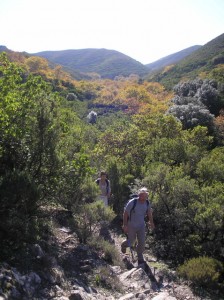
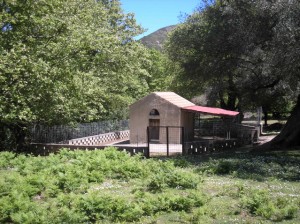
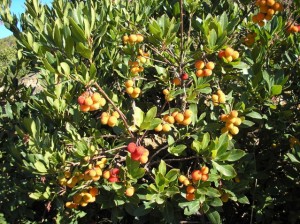
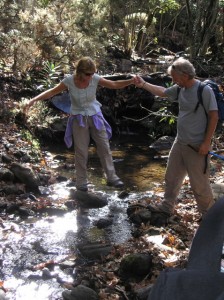
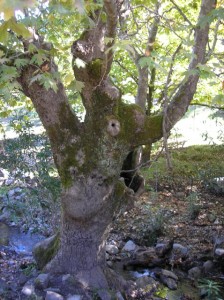
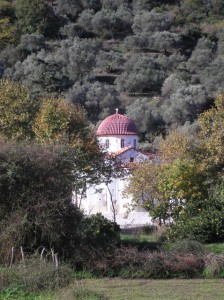
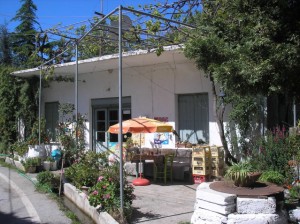

Recent Comments